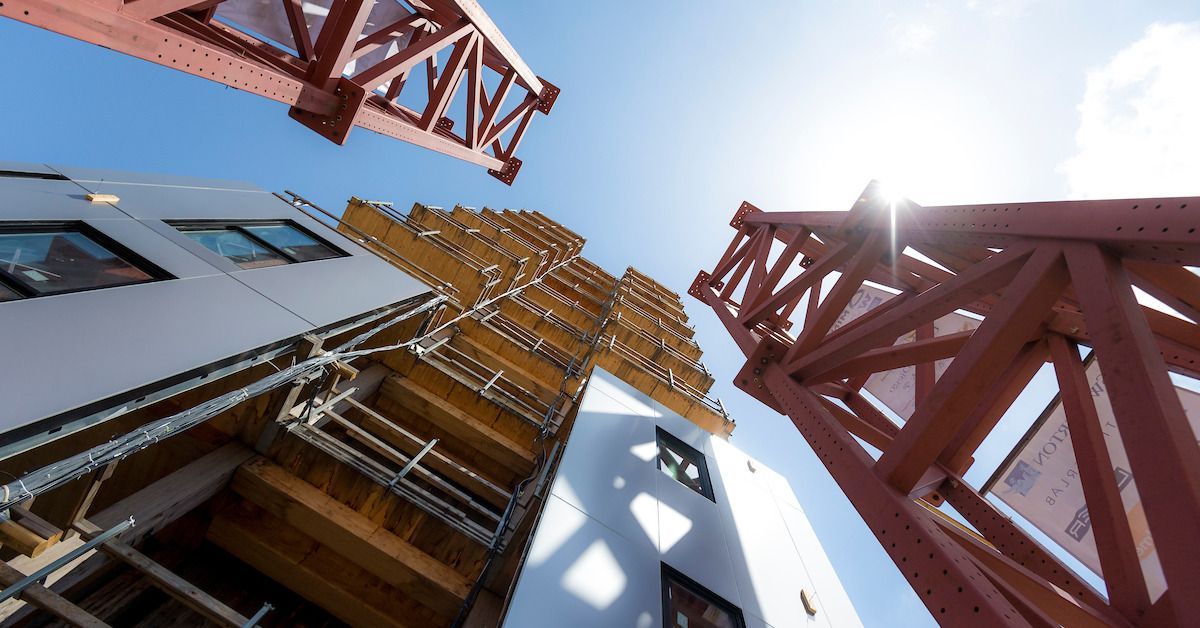Engineers Shake Tallest Full-scale Building Ever Constructed on UC San Diego Earthquake Simulator
The 10-story tower was tested on the UC San Diego NSF-funded outdoor shake table, one of the two largest shake tables in the world
Story by:
Published Date
Article Content
What happens when a 10-story tall building is put to the test on the only outdoor shake table in the world? That is what a group of engineers came together to find out on May 9 as part of the Tallwood project conducted on UC San Diego's National Science Foundation-funded earthquake simulator.
The Tallwood building is the tallest full-scale building ever to be constructed and tested on an earthquake simulator. On Tuesday, the building underwent simulations of two of the most destructive earthquakes in recent history: the first test was the equivalent of the 6.7 magnitude 1994 Northridge earthquake, the second the equivalent of the 7.7 magnitude Chi Chi earthquake that took place in Taiwan in 1999. The series of tests is funded by the NSF.
Get a glimpse of the Tallwood project and see the researchers test the 10-story building in the photos and videos below.
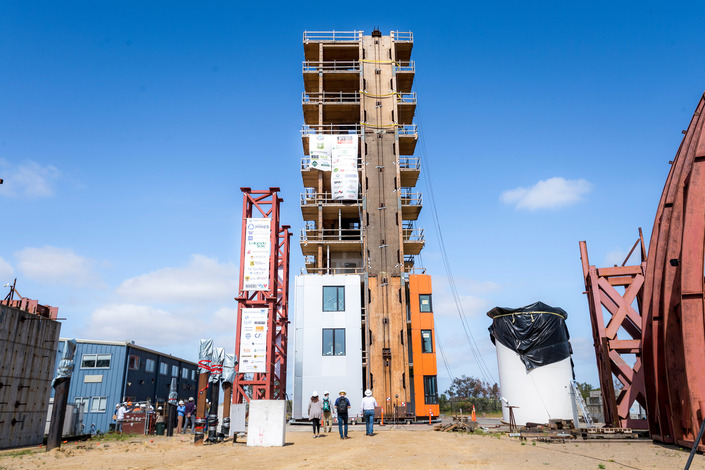
Prior to each test, Professor of Structural Engineering Joel Conte announced on a loudspeaker the countdown for each earthquake simulation as engineers eagerly awaited the impact of the 6.7 and 7.7 magnitude shakes on the building. Conte is the principal investigator of the UC San Diego shake table experimental facility upgrade as well as operation and maintenance projects.
After each earthquake simulation, researchers examined the building to assess for damage. “It performed exactly as we expected — the building remained damage free after two major design-level earthquakes back to back,” said Shiling Pei, associate professor at Colorado School of Mines and lead investigator on the NHERI Tallwood Project.
Conte called the tests “historic,” emphasizing how the Tallwood building was the tallest structure to ever be tested on a shake table.
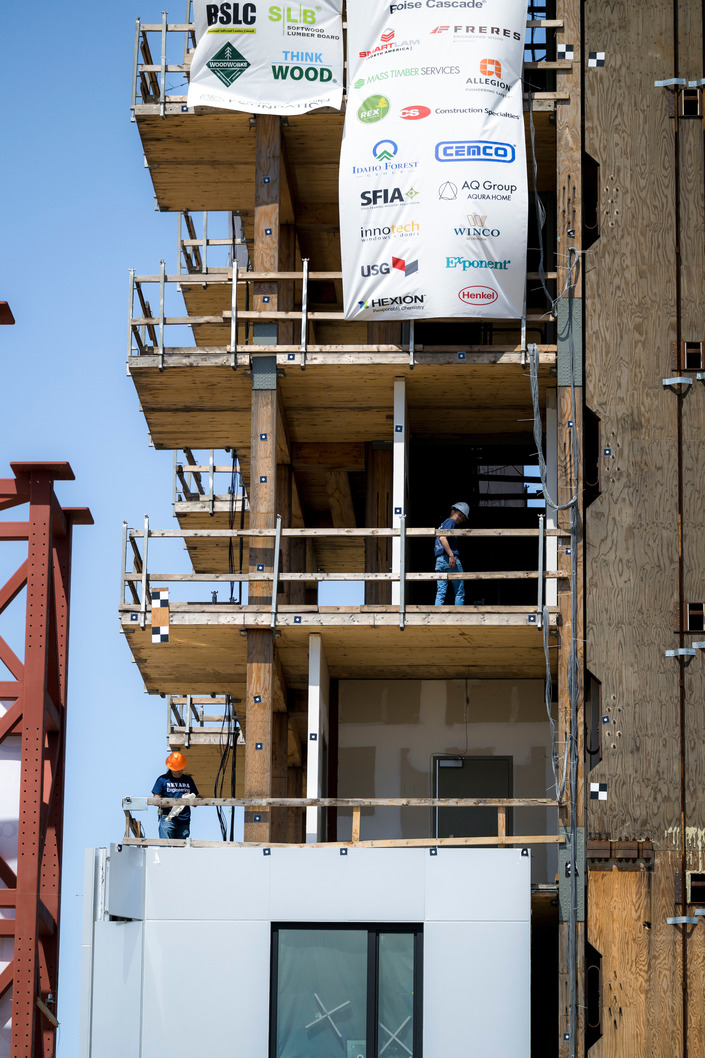
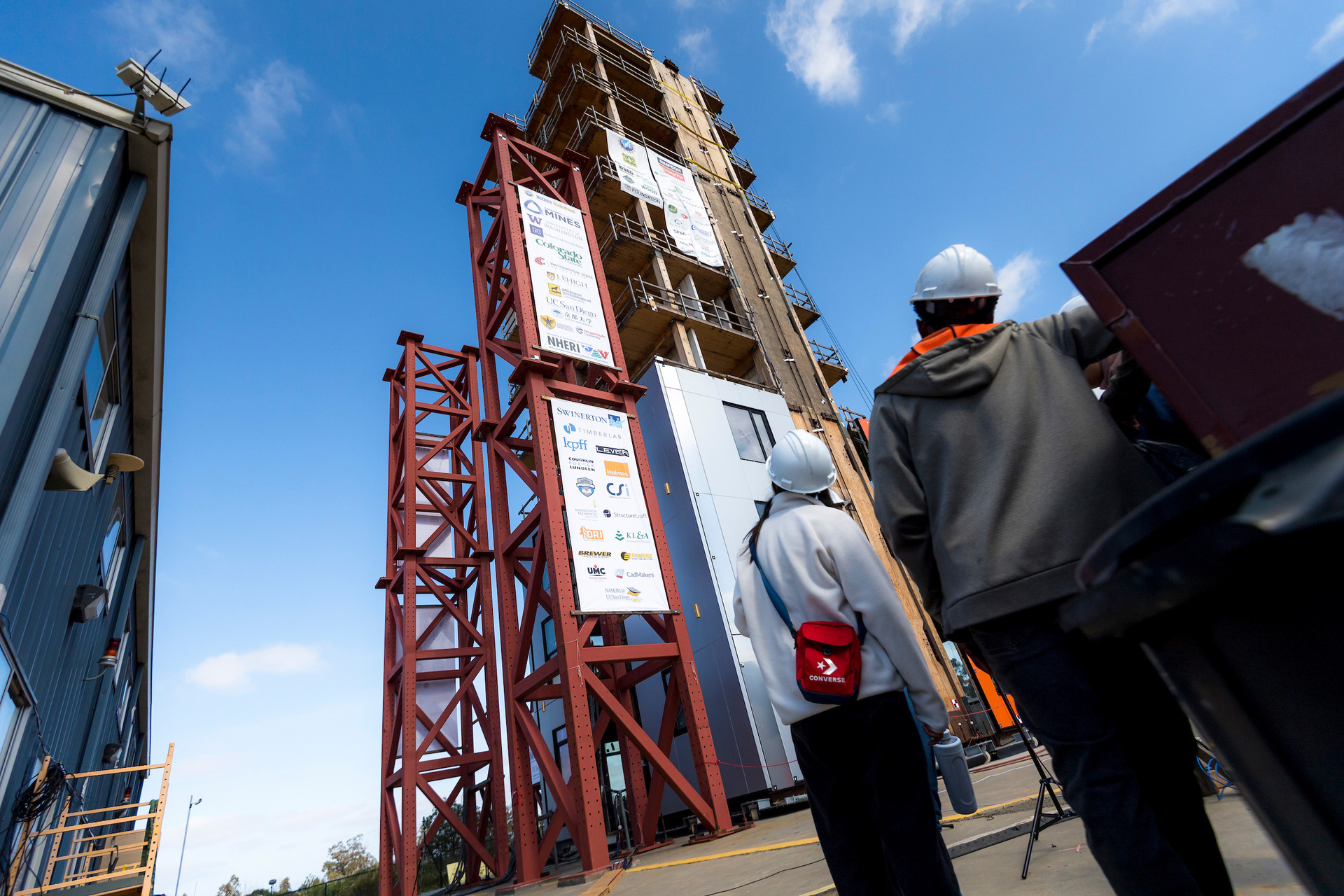
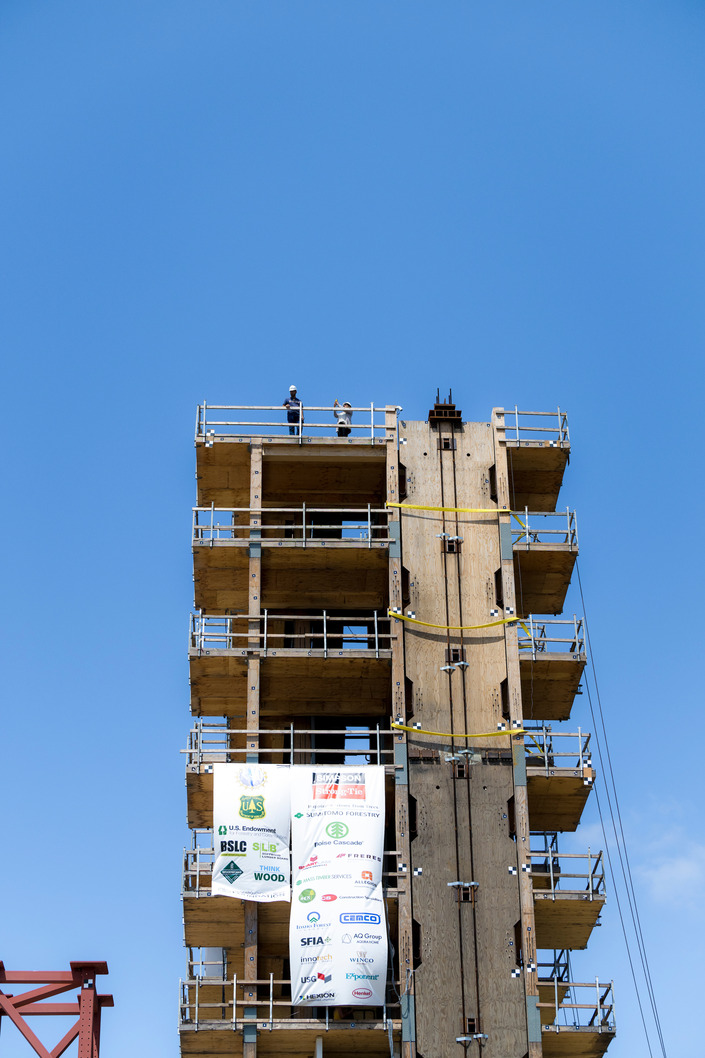
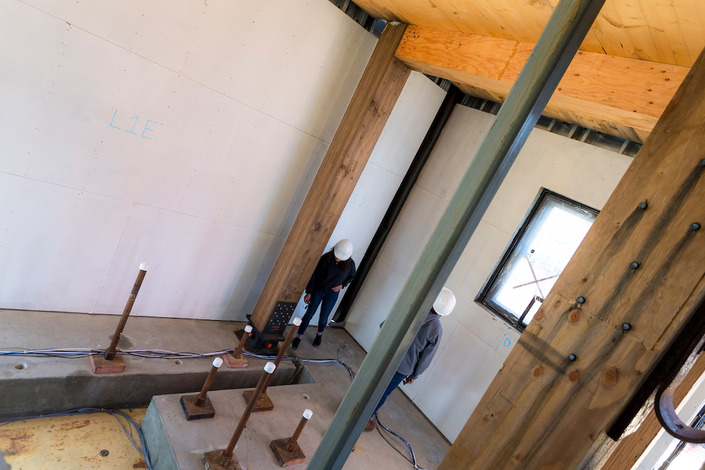
"So far, I am very confident that we will not see damage to this system at this level of earthquakes,” said Pei, following the series of simulations.
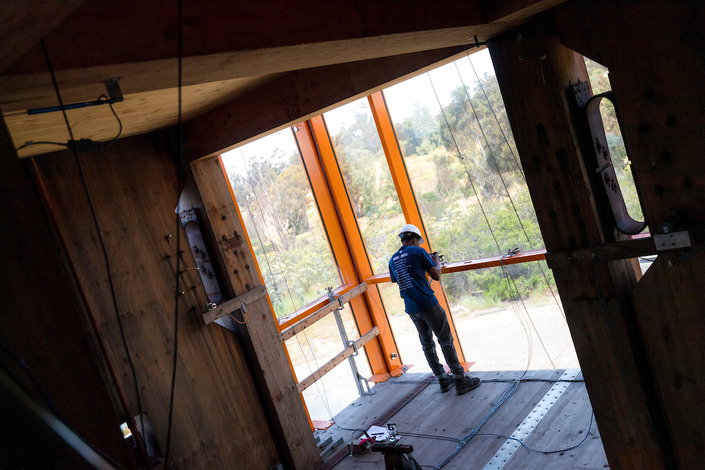
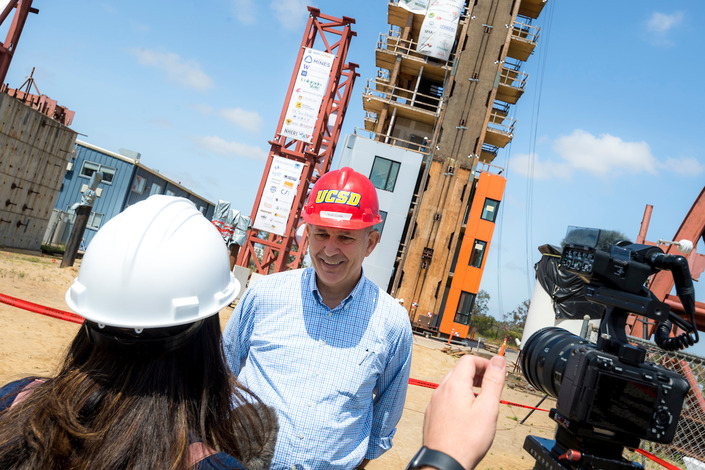
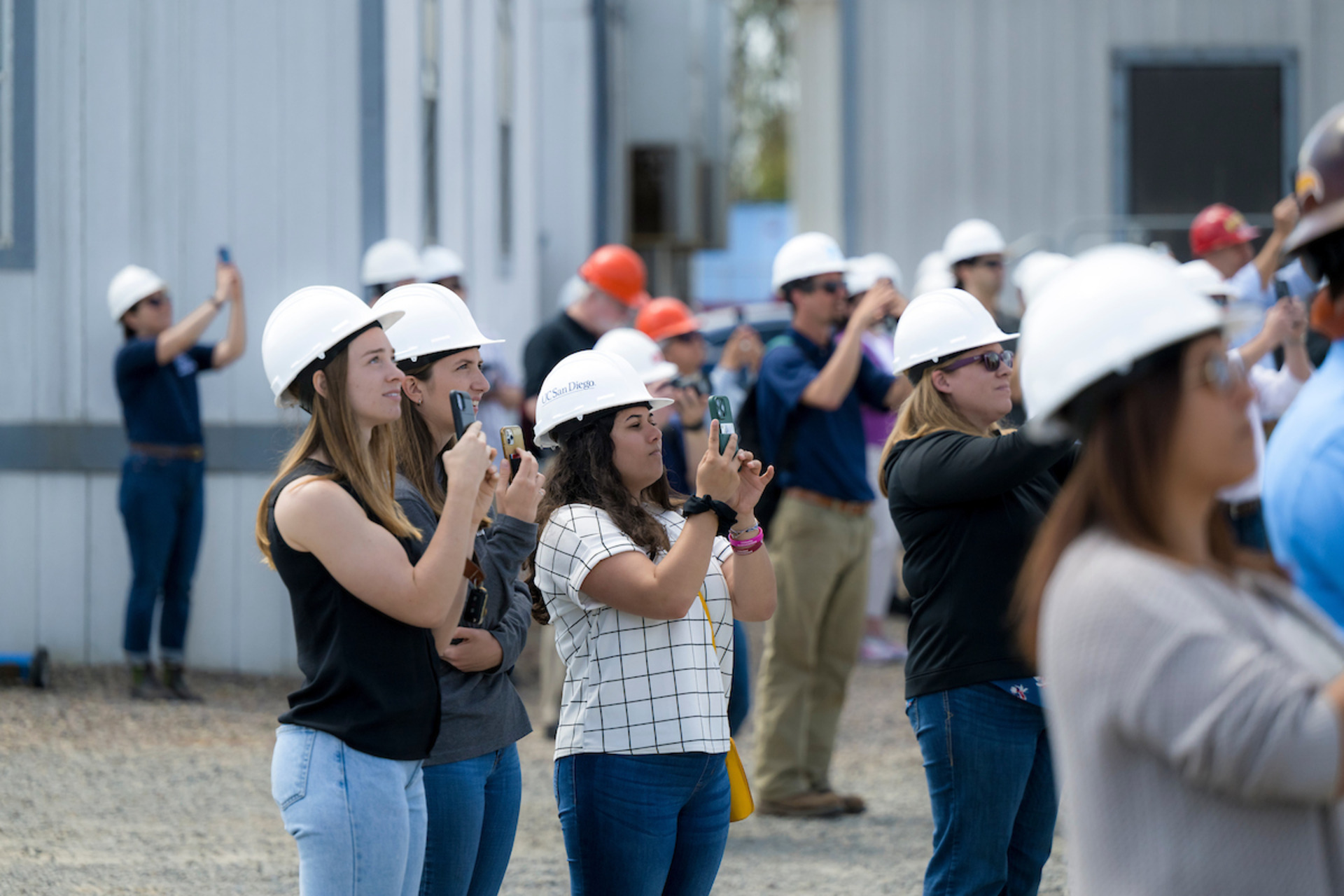
Share This:
Stay in the Know
Keep up with all the latest from UC San Diego. Subscribe to the newsletter today.
